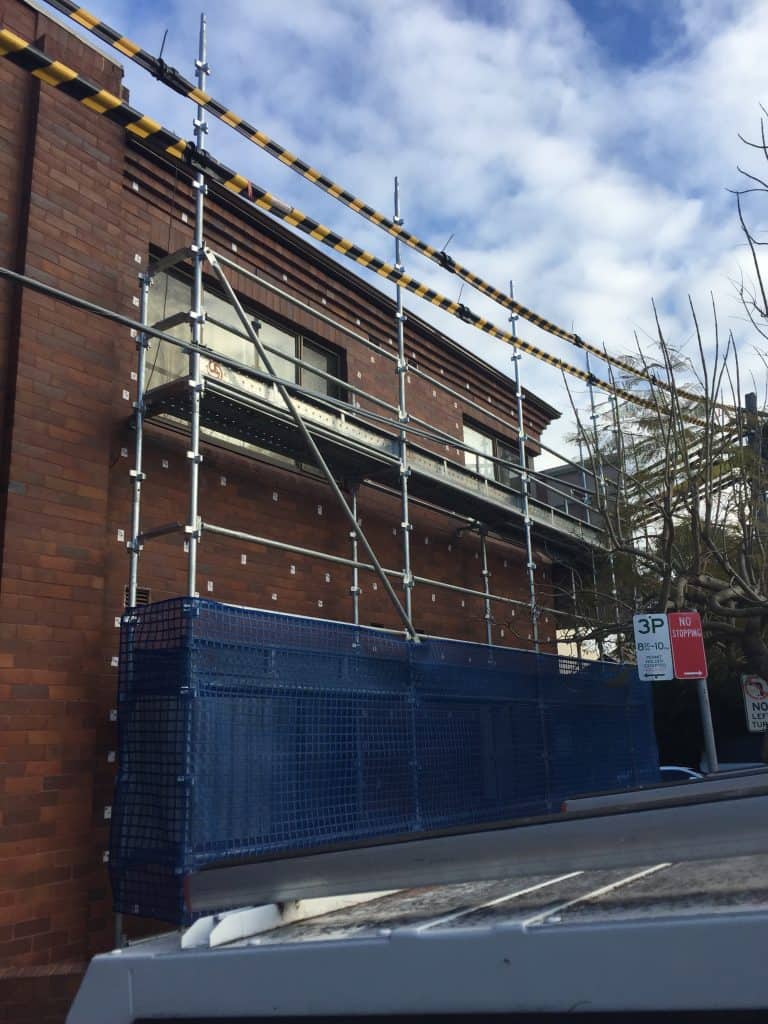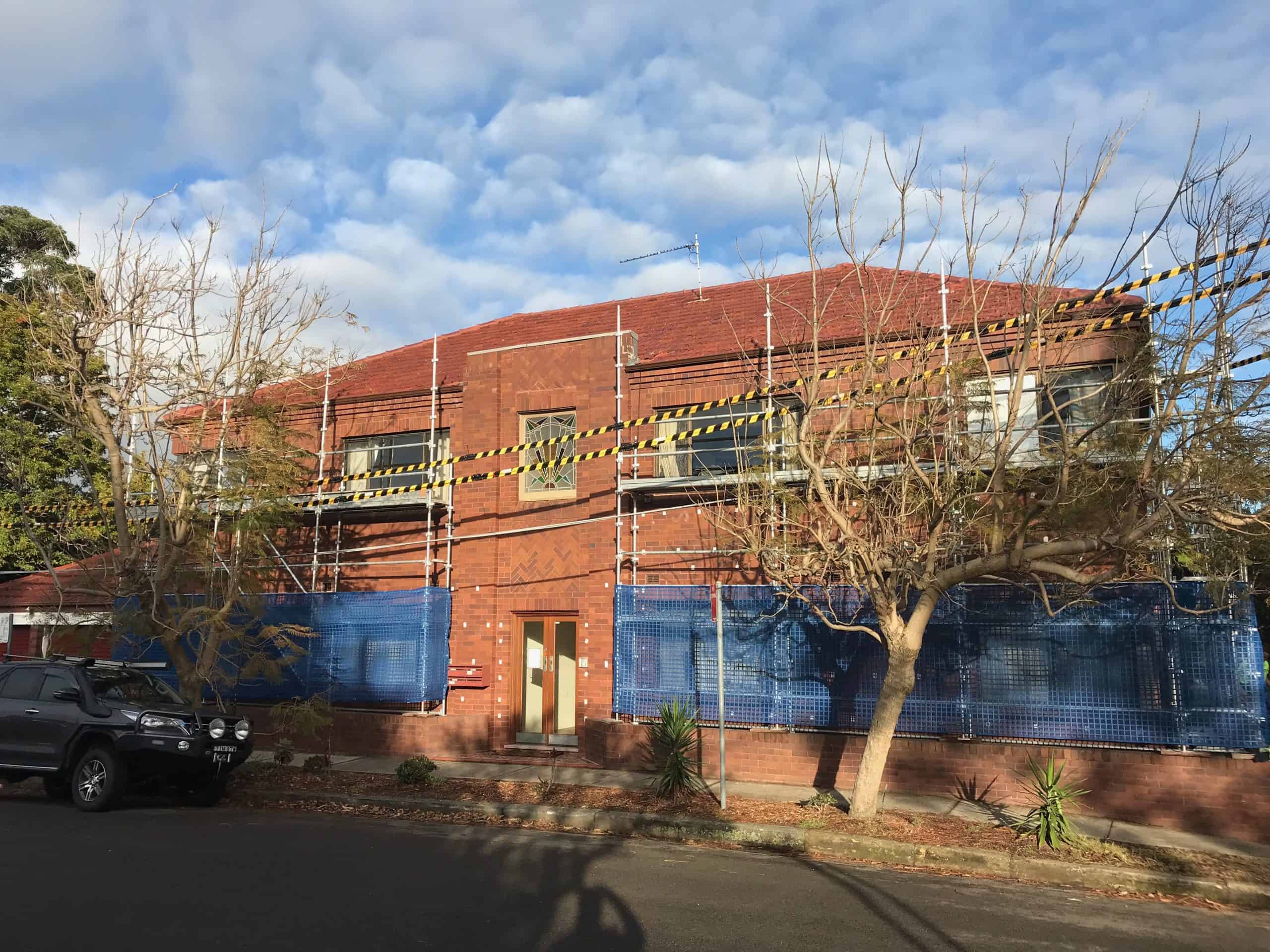There are three main components of an external brick cavity wall and they are;
- The brick masonry unit.
- The bedding mortar (“brickies” mortar) and
- The brick tie or cavity wall tie.
All three components are of critical importance to the stability of the wall and the degradation or failure of any one of these components compromises the integrity of the wall as a whole.
Buildings of an older age were typically constructed with galvanised steel ties and lime mortar. Modern construction practices utilise much stronger cement based bonding mortar and long lasting stainless steel ties.
Helifix have developed tried and tested systems for Cavity Brick Wall Tie repairs as cost effective methods to reinstate the structural integrity of your building. Helitec Structural Services replace corroded and failing wall ties with marine grade stainless steel helical ties.

The Brief – This block of 4 units in Randwick had extensive failure of brick wall ties and separation of the outer facade leaf from the inner substrate. Parts of the wall had bowed and were in danger of collapsing. Helitec were called to reinstate the structural integrity and appearance of the building. Some of the walls were extensively bowed and required rebuilding.
Corroded Brick Wall Ties – Helitec undertook an extensive inspection of the external brick walls. After the location of the galvanised steel wall ties and using our borescope camera the inspection discovered the galvanised cavity brick wall ties had suffered extensive corrosion. We also removed a sample of bricks and concluded there was little functionality of the remaining ties.

It was decided to install Helifix Resities. Because Resities are chemically bonded to the inner leaf of the brick cavity wall Helitec are able to insert the helical ties through the mortar joints without the need to drill pilot holes in the bricks. Below are examples of the result when Brick Ties are inserted mechanically without a chemical bond. The results, although structurally sound, can be unsightly.
Our repair methodology –
- Insertion of 840 no. Helifix Stainless Steel Resities to the external cavity brickwork.
- Drill holes through the outer masonry leaf and into the backup substrate to insert 8mm x 205mm wall ties.
- Insert Epoxyplus resin into the backup substrate by a tube until the hole is completely filled.
- Push the Resitie through the hole in the outer masonry leaf and wind the tie into the backup substrate.
- Place Epoxyplus resin over the exposed Resitie in the outer leaf. Protect the area around the hole by use of masking tape. Inject resin until the hole is filled.
- Allow the resin to cure and make good by repointing with tinted mortar.
Bowed Wall Replacement – Parts of cavity brick wall had separated and bowed outwards. The corbelled brick façade had become dangerous and needed urgent replacement. The electrical mains point of attachment bracket had be removed from the brick wall and replaced after rebuilding. Several lintels above window opening were corroded and replaced during the work

Our repair methodology –
- Isolate the electrical mains supply by covering with Energy Australia approved tiger tails.
- Demolish the bowed courses of outer skin wall brick and support the roof using props.
- Remove bricks above window openings.
- Replacement of mild steel window lintel bars with stainless steel bars. The use of stainless steel arch bars was a critical factor in ensuring the durability of the lintel bars due to the buildings proximity to the harbour.
- Remove existing electrical mains point of attachment and supply and install new 450mm double rafter bracket.
- Clean removed bricks and supply additional matched bricks where the bricks where damaged beyond reuse.
- Rebuild outer brick skin using 600mm centered stainless steel helical ties in accordance with the relevant BCA and Australian Standards.
- Use matching tinted mortar beds in all rebuilt brick courses.
- Lay cleaned bricks around the repaired window openings.
Pull Out Testing of Replaced Wall Ties
On completion of the works Helitec completed our standard quality test. This involves testing the pull out strength of a sample of the replaced helical wall ties using a apparatus that measures the tensile strength. The apparatus grips the helical ties in a hydraulic chuck that measures Newtons force, as illustrated below.
On completion of remedial works Helitec undertake a testing regime that ensures or work meets the most stringent Australian Building Codes. This gives our clients the peace of mind knowing that, although unseen, Helitec’s masonry remediations are carried out to a high standard of quality when we repair cavity brick walls.

